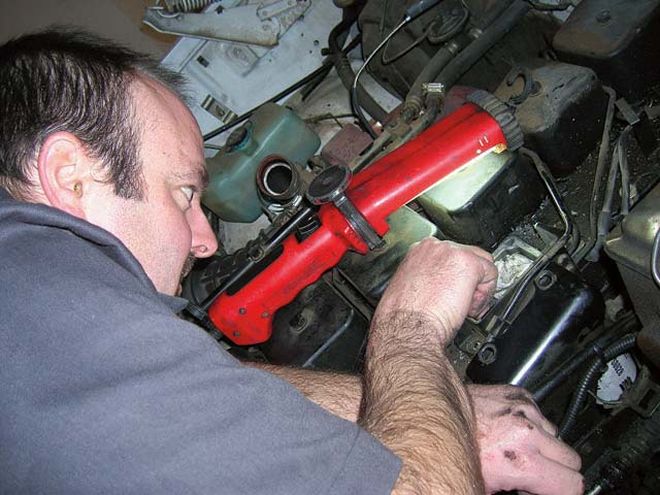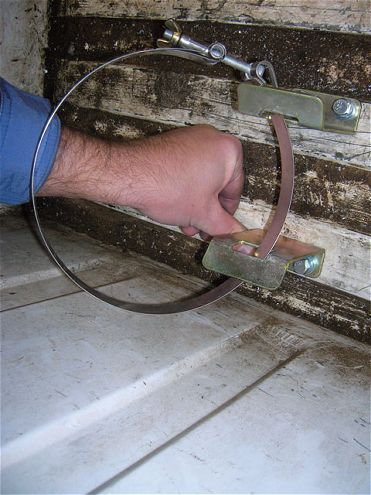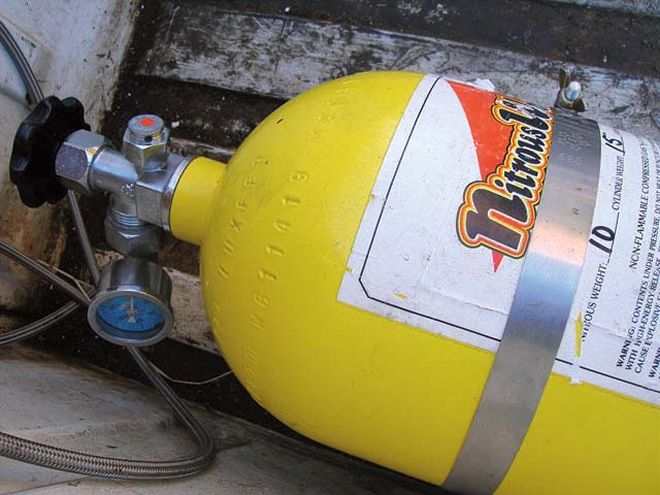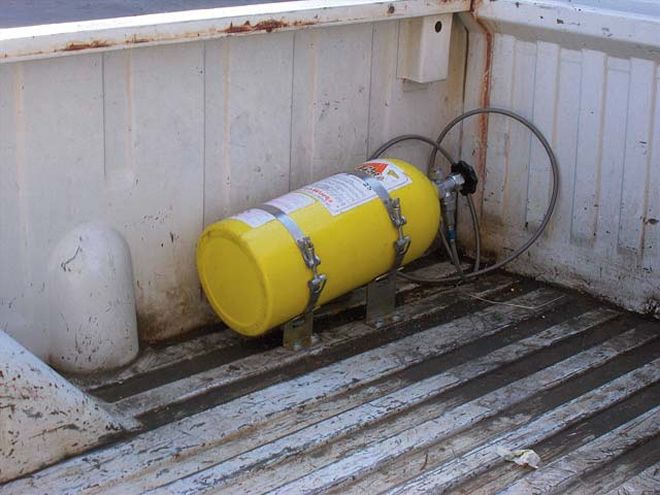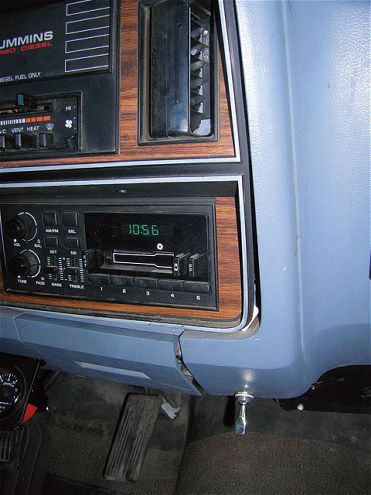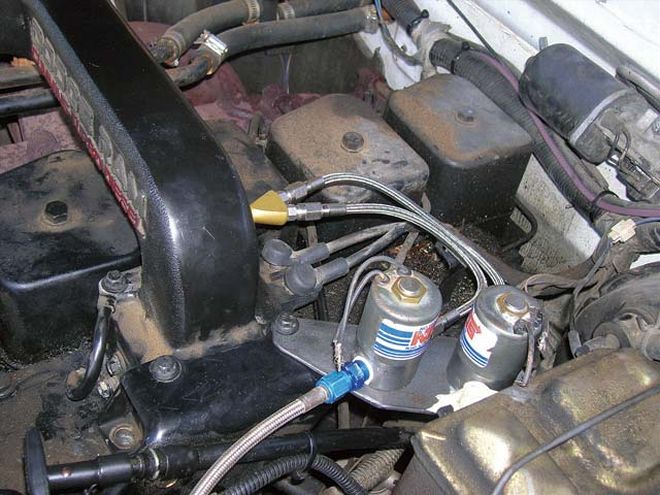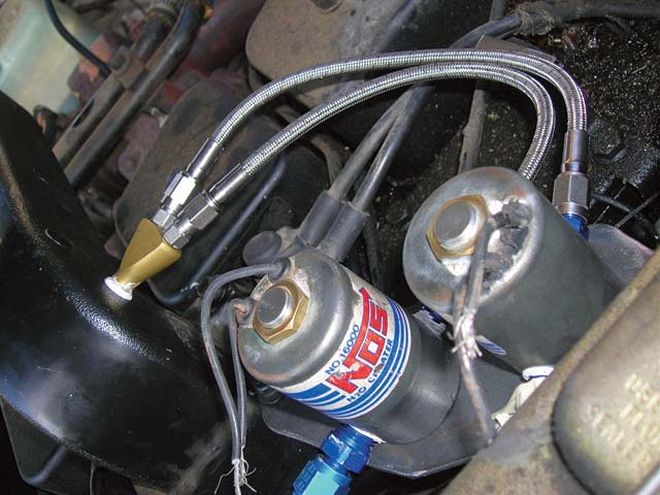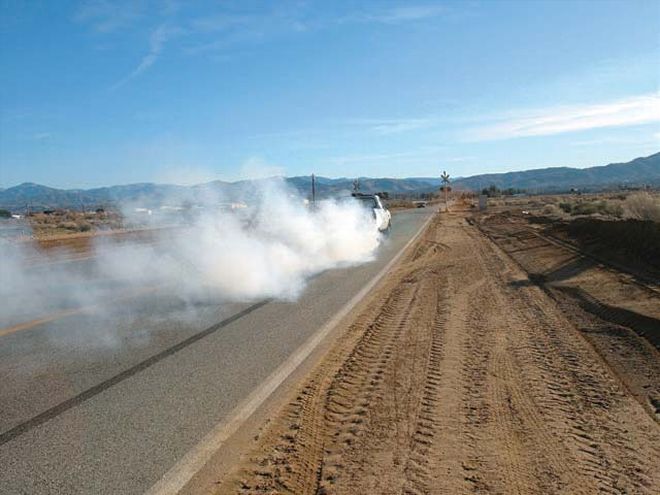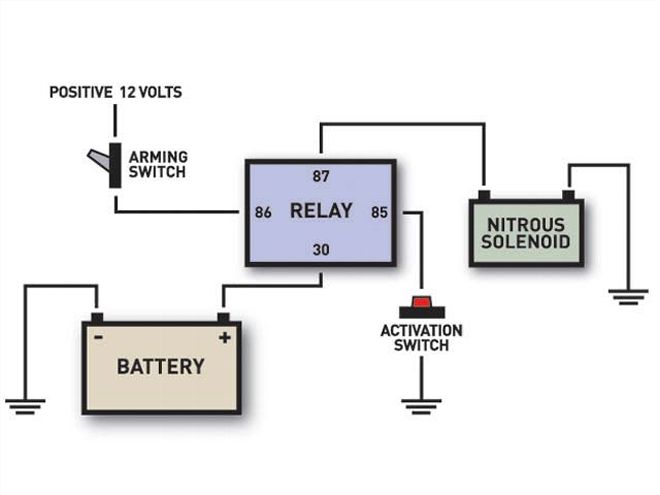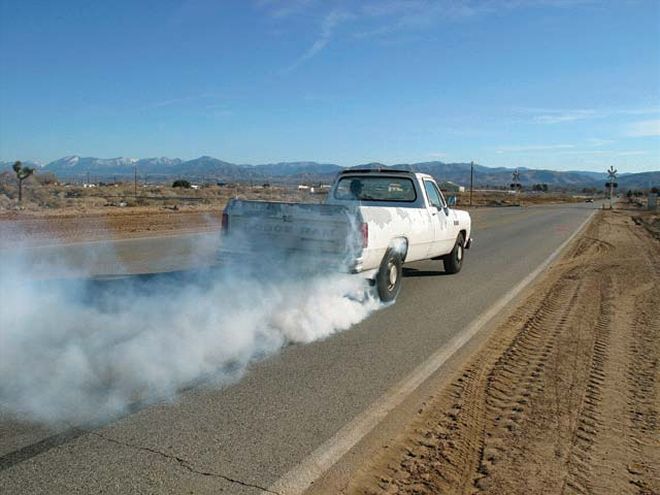
| cheap Nitrous Kits burnout
One of the biggest "bang for the buck" products for your diesel is nitrous oxide. There's not much else on the market that can boast an increase of 100 or more horsepower, for less than $500. With our project Rust Bucket Cummins-powered Dodge Ram, looking for dirt-cheap horsepower meant that nitrous was the next logical step after our fuel modifications. A nitrous system would give us the air we needed to burn up excess fuel without an expensive turbo upgrade, and since nitrous oxide is 36 percent oxygen (versus about 21 percent for regular air), we figured a nitrous-assisted vehicle might make more efficient use of the fuel that was available.
Nitrous parts are available in non-kit form, and used bottles, solenoids, and lines are all available on eBay. Since Associate Editor Jason Sands had about 1,000 old nitrous parts lying around his office, we decided to gather them all up and see if we could create a used nitrous kit on a budget.
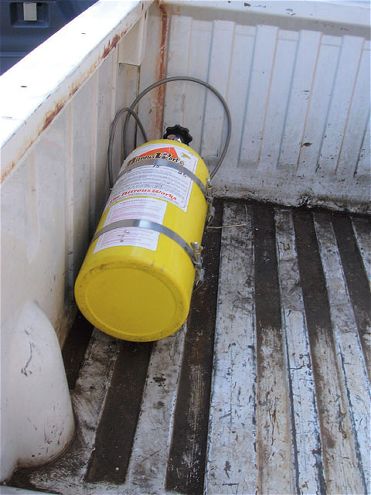
| cheap Nitrous Kits nitrous Tank
THE BASICS To have a workable nitrous system, you only need a few basic parts: a bottle, a feed line, a solenoid, a spray nozzle, an arming switch, and an activation switch. Since we had a bottle, two feed lines, about five solenoids, and three switches already, we were off to a good start. We ended up needing a fogger nozzle and miscellaneous fittings, which we bought at a local speed shop. They were out of dry fogger nozzles, so we had to buy a "wet" nozzle-where gasoline is designed to come in one side and nitrous on the other.
We're going to try running nitrous through both sides of the fogger, and presto, we'll have a two-stage nitrous system on a budget. The only drawback is that, with this type of design, we will be somewhat limited on power because the single nozzle will only flow so much nitrous.
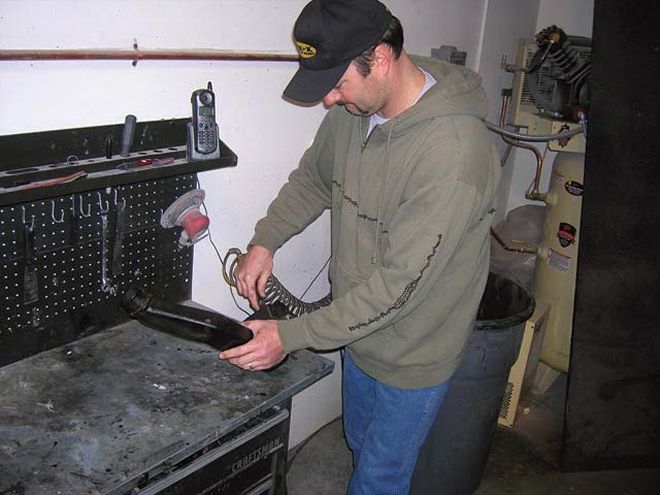
| After drilling and tapping, Johnson sprayed the inside of the pipe off with an air hose in case any metal bits were left over.
Nitrous solenoids are also restricted by how much nitrous they can flow, and eventually they can become a limiting factor. For our goal of adding an extra 100-200 hp, using a single nitrous bottle, a -6 feed line (-4 is standard), and a single fogger nozzle should provide us with the boost we need. If you're looking to make ridiculous types of power with nitrous, check out the "Big Power Nitrous" article on page 160.
Unfortunately, we didn't get any horsepower numbers for our homebuilt nitrous kit because we were still dealing with our stock transmission. As for how much power we can make, stay tuned, and we'll get a number in a future issue. We'll be trying .035 (roughly 50 hp) and .070 jets (100-150 hp) to let you know what kind of power a little bottle can get you. For now, we nickel-and-dimed ourselves up to about $300 in parts with this kit and have all used parts to show for it. You could probably cobble together a single stage kit for around $200, or you could just spend $500-$700 on a new kit. As for us, we're hoping to see an additional 100 horsepower (or more) at the wheels from our little investment. We feel that, at that power level, the risk will be fairly minimal.
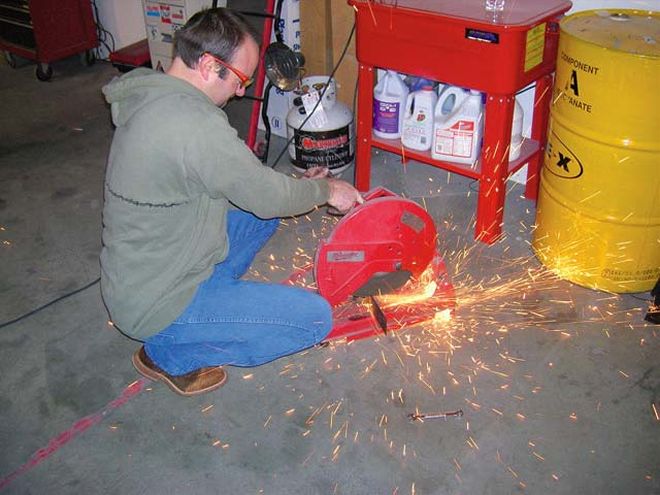
| Cheap means cheap! We found a piece of scrap metal that we cut up and ground to the proper size to mount our nitrous solenoids.
THE DANGERS OF NITROUS Even with a 100-200 horsepower kit, there are still dangers when it comes to using nitrous oxide. The main ones are turbo overspeeding, nitrous backfires, and too much horsepower. Nitrous is hard on turbos because it hits them all at once. Suddenly, the turbo has to work a lot harder and spin faster. The best way to prevent overspeeding is to know what kind of boost your turbo can produce without failure. With our stocker, we knew we could see about 35 psi without it blowing up, so we're keeping that number in the back of our minds for all dragstrip runs and dyno pulls.
Too much nitrous too soon can put the fire out, but it can also backfire. The best way to avoid this situation is to bring on the nitrous only at full throttle with the boost up and use staged systems if necessary. For our budget system, we're going to play it safe and only trigger it above 20 psi. That way, we're sure to have plenty of fuel and boost when the nitrous is activated.
The last danger is making too much power, and while it might sound like a joke, the rest of your engine must be up to snuff when using nitrous. This means connecting rods, head gaskets, and other hardware must be able to withstand the power you're making. For our Dodge, we knew we were skating on thin ice above about 400 rear wheel horsepower on the stock head gasket, so that will be our imposed limit until we get head studs.
 | cheap Nitrous Kits burnout
One of the biggest "bang for the buck" products for your diesel is nitrous oxide. There's not much else on the market that can boast an increase of 100 or more horsepower, for less than $500. With our project Rust Bucket Cummins-powered Dodge Ram, looking for dirt-cheap horsepower meant that nitrous was the next logical step after our fuel modifications. A nitrous system would give us the air we needed to burn up excess fuel without an expensive turbo upgrade, and since nitrous oxide is 36 percent oxygen (versus about 21 percent for regular air), we figured a nitrous-assisted vehicle might make more efficient use of the fuel that was available.
Nitrous parts are available in non-kit form, and used bottles, solenoids, and lines are all available on eBay. Since Associate Editor Jason Sands had about 1,000 old nitrous parts lying around his office, we decided to gather them all up and see if we could create a used nitrous kit on a budget.
| cheap Nitrous Kits burnout
One of the biggest "bang for the buck" products for your diesel is nitrous oxide. There's not much else on the market that can boast an increase of 100 or more horsepower, for less than $500. With our project Rust Bucket Cummins-powered Dodge Ram, looking for dirt-cheap horsepower meant that nitrous was the next logical step after our fuel modifications. A nitrous system would give us the air we needed to burn up excess fuel without an expensive turbo upgrade, and since nitrous oxide is 36 percent oxygen (versus about 21 percent for regular air), we figured a nitrous-assisted vehicle might make more efficient use of the fuel that was available.
Nitrous parts are available in non-kit form, and used bottles, solenoids, and lines are all available on eBay. Since Associate Editor Jason Sands had about 1,000 old nitrous parts lying around his office, we decided to gather them all up and see if we could create a used nitrous kit on a budget.
 | cheap Nitrous Kits nitrous Tank
THE BASICS
| cheap Nitrous Kits nitrous Tank
THE BASICS 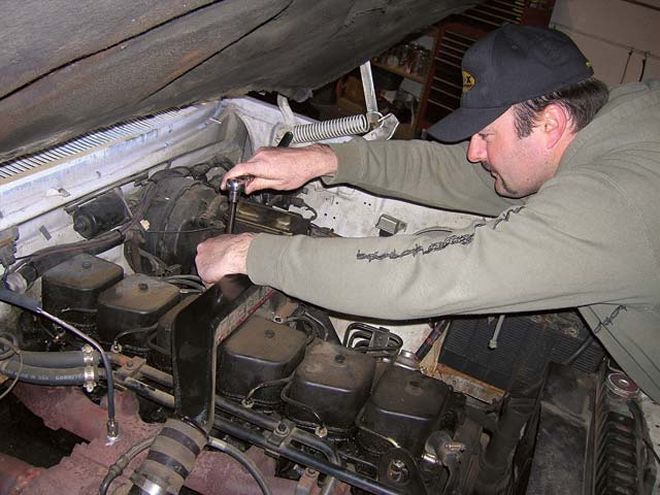
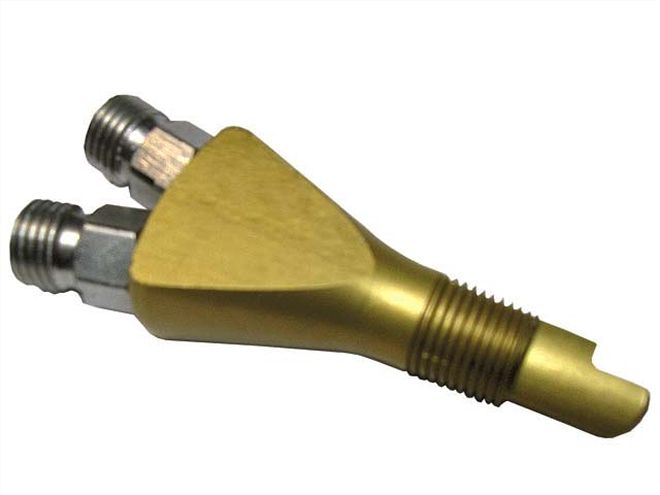
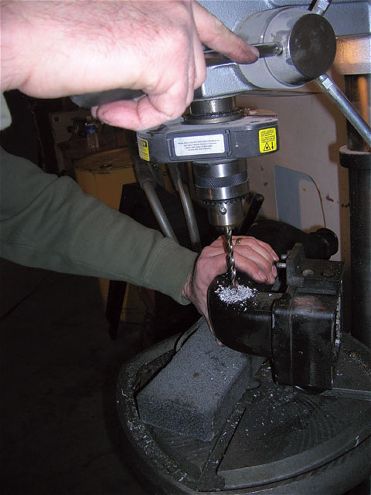
 | After drilling and tapping, Johnson sprayed the inside of the pipe off with an air hose in case any metal bits were left over.
Nitrous solenoids are also restricted by how much nitrous they can flow, and eventually they can become a limiting factor. For our goal of adding an extra 100-200 hp, using a single nitrous bottle, a -6 feed line (-4 is standard), and a single fogger nozzle should provide us with the boost we need. If you're looking to make ridiculous types of power with nitrous, check out the "Big Power Nitrous" article on page 160.
Unfortunately, we didn't get any horsepower numbers for our homebuilt nitrous kit because we were still dealing with our stock transmission. As for how much power we can make, stay tuned, and we'll get a number in a future issue. We'll be trying .035 (roughly 50 hp) and .070 jets (100-150 hp) to let you know what kind of power a little bottle can get you. For now, we nickel-and-dimed ourselves up to about $300 in parts with this kit and have all used parts to show for it. You could probably cobble together a single stage kit for around $200, or you could just spend $500-$700 on a new kit. As for us, we're hoping to see an additional 100 horsepower (or more) at the wheels from our little investment. We feel that, at that power level, the risk will be fairly minimal.
| After drilling and tapping, Johnson sprayed the inside of the pipe off with an air hose in case any metal bits were left over.
Nitrous solenoids are also restricted by how much nitrous they can flow, and eventually they can become a limiting factor. For our goal of adding an extra 100-200 hp, using a single nitrous bottle, a -6 feed line (-4 is standard), and a single fogger nozzle should provide us with the boost we need. If you're looking to make ridiculous types of power with nitrous, check out the "Big Power Nitrous" article on page 160.
Unfortunately, we didn't get any horsepower numbers for our homebuilt nitrous kit because we were still dealing with our stock transmission. As for how much power we can make, stay tuned, and we'll get a number in a future issue. We'll be trying .035 (roughly 50 hp) and .070 jets (100-150 hp) to let you know what kind of power a little bottle can get you. For now, we nickel-and-dimed ourselves up to about $300 in parts with this kit and have all used parts to show for it. You could probably cobble together a single stage kit for around $200, or you could just spend $500-$700 on a new kit. As for us, we're hoping to see an additional 100 horsepower (or more) at the wheels from our little investment. We feel that, at that power level, the risk will be fairly minimal.
 | Cheap means cheap! We found a piece of scrap metal that we cut up and ground to the proper size to mount our nitrous solenoids.
THE DANGERS OF NITROUS
| Cheap means cheap! We found a piece of scrap metal that we cut up and ground to the proper size to mount our nitrous solenoids.
THE DANGERS OF NITROUS 